A few years ago, I worked in an sustainable waste management organization and part of our educational lessons was teaching about the numerous benefits of vermicompost. It was such an awesome process and I desperately wanted to have my own system, but I only lived in a small apartment. My manager gave me a small coffee container, but it was such a small system I couldn’t get much from it and even the smallest of mistakes was deadly. I wanted to expand to try again, but a vermicompost worm bin ran from $80-$100, which was just too big of an investment, if I was just going to end up killing them all.
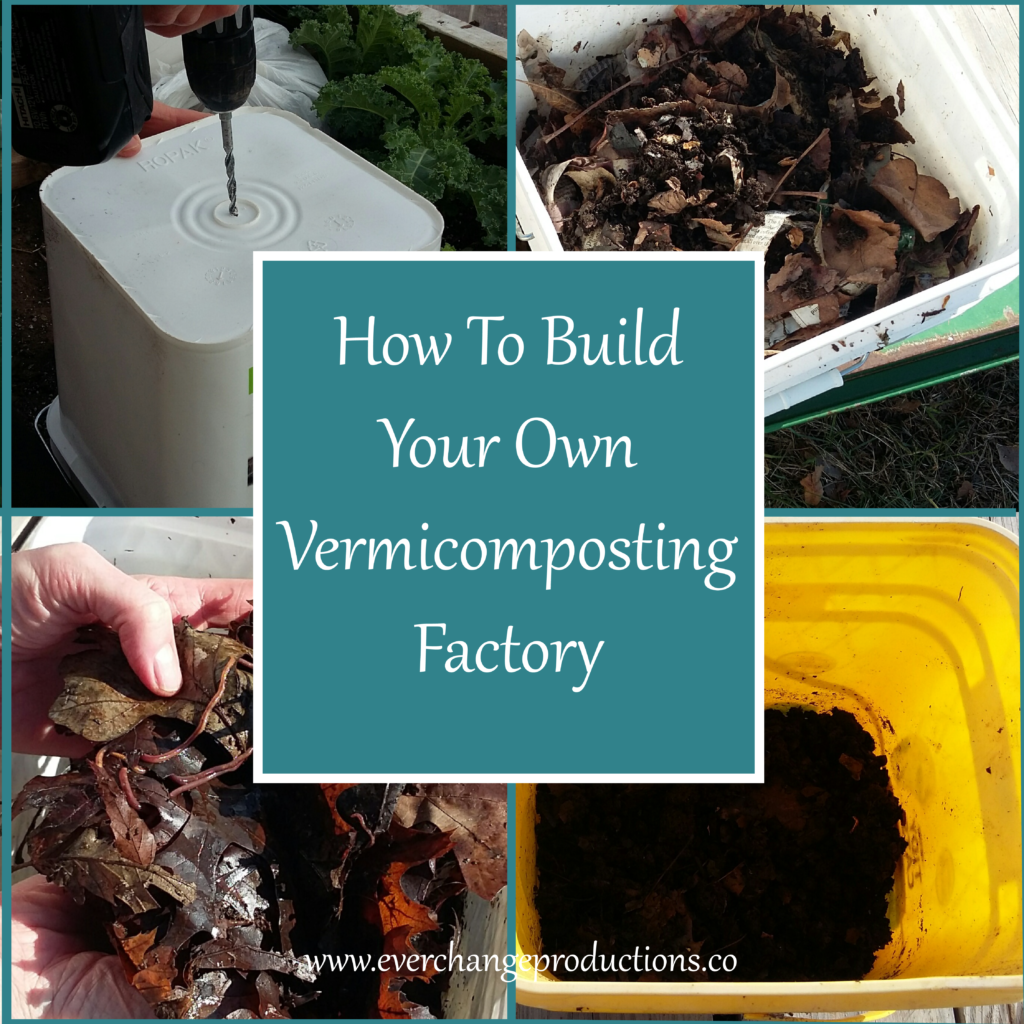
Fast forward a few years and I finally get up the nerve to try again, but there was still one problem: what was I going to put them in? I need something affordable, didn’t take up too much room and didn’t require for me to completely empty everything out in order to get to the good stuff. As I searched, longingly through pages of the same thing over and over again, a thought came to me. The worm bin was basically, containers stacked on top of each other, then there was the bottom container to collect all the excess water. Why couldn’t I do the same? Today, I’ll show you an affordable, space-saving, hit you over the head simple solution to your food waste problems.
How do you start vermicomposting?
Supplies Needed:
- Worms
- Lots of Newspapers
- Bag of leaves
- Drill (1/4 inch bit) or Nail and a Hammer
- Raw Fruit and Vegetable Scraps- Learn more about what and what not to feed worms
- At least 2 Stackable Buckets with one lid- I used kitty litter buckets, but you can use 5-Gallon buckets, icing buckets from your local bakery, etc. You can often find these on Craigslist for just a dollar or two.
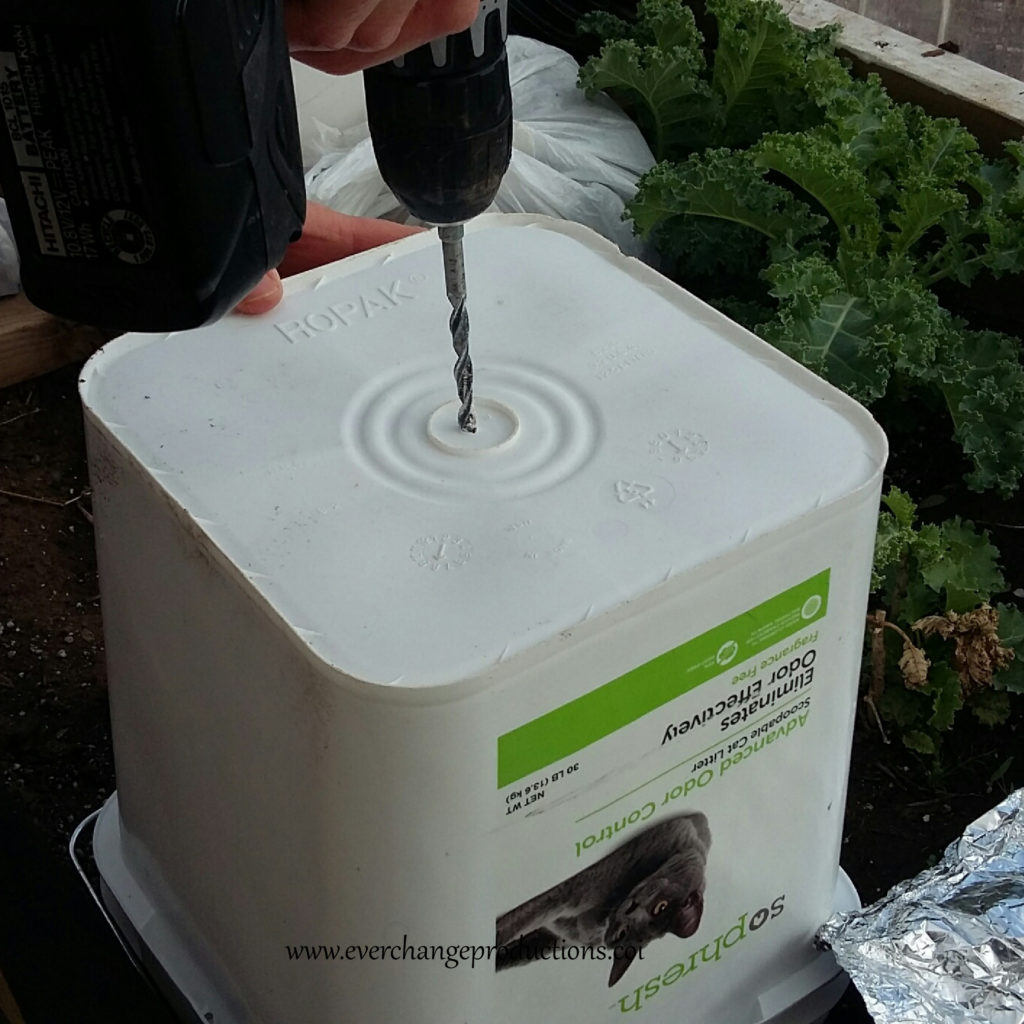
Step 1: Drill Holes
The beauty of this system is as you expand your worm bin you keep adding buckets. No matter how many buckets you have, drill holes in all the buckets except the last one. This will help drainage from backing up and drowning your worms because it will all drain into the last bucket. Also, drill a few holes in the lid to let air in.
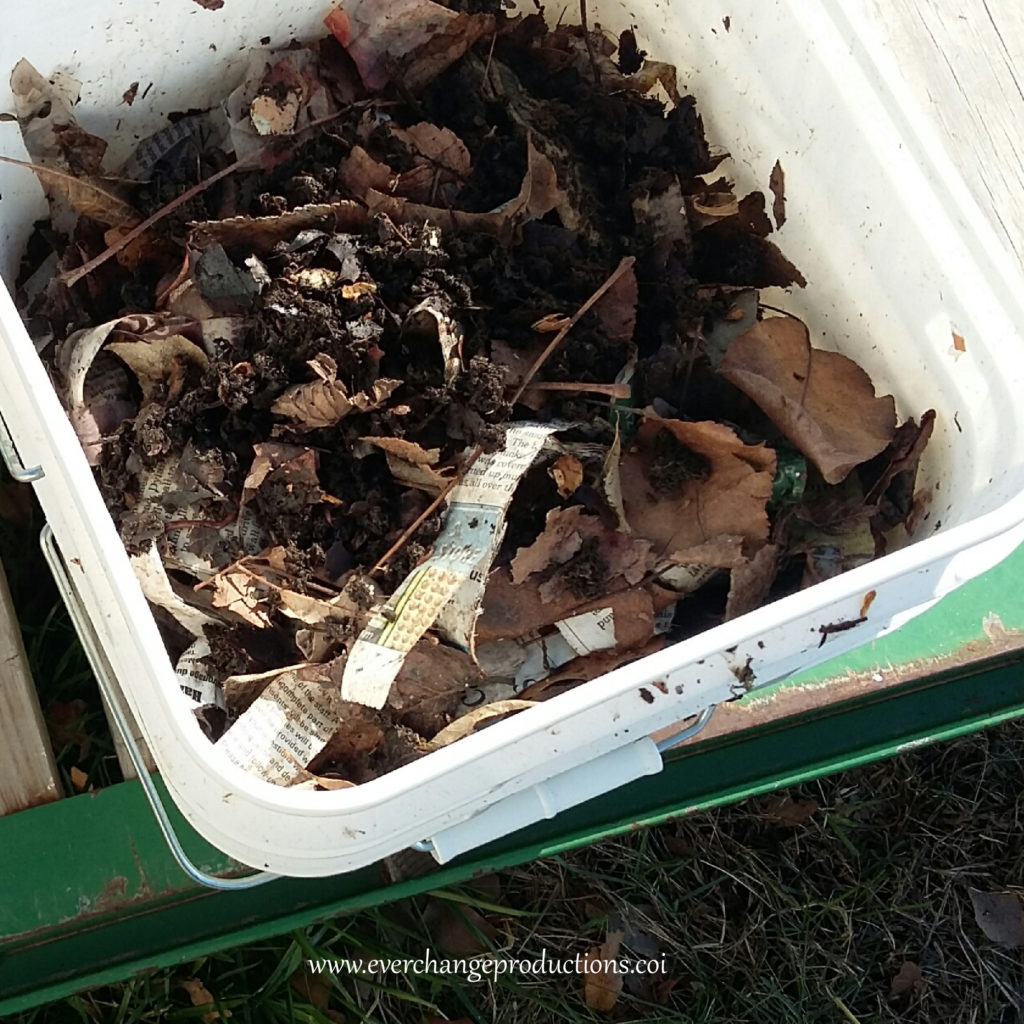
Step 2: Add bedding
To start out, just use two buckets, you can keep adding as you are ready to expand. Fill the bucket with holes with 1 inch strips of newspaper and crushed up leaves then stack on to the bucket with no holes. Then add enough water to make the bedding feel like a wet sponge. If you squish the bedding your hand it should stick together but not drip. This an extremely important step, because worms are made mostly of water, so they can’t survive in an environment that’s too dry. Just fill the buckets about 3/4 the way full. Don’t pack it down because that takes away the air space for the worms.
When the bedding is established, add your food scraps. Even if you have 500 worms, it takes time for them to get established and start working. In a couple of months, those worms will eat up to half their weight daily. In the beginning stick with a few bits of food and let them eat it all before adding more. Each time you add, the food scraps, cover them with a layer of newspaper or leaves and make sure their bedding is wet enough.
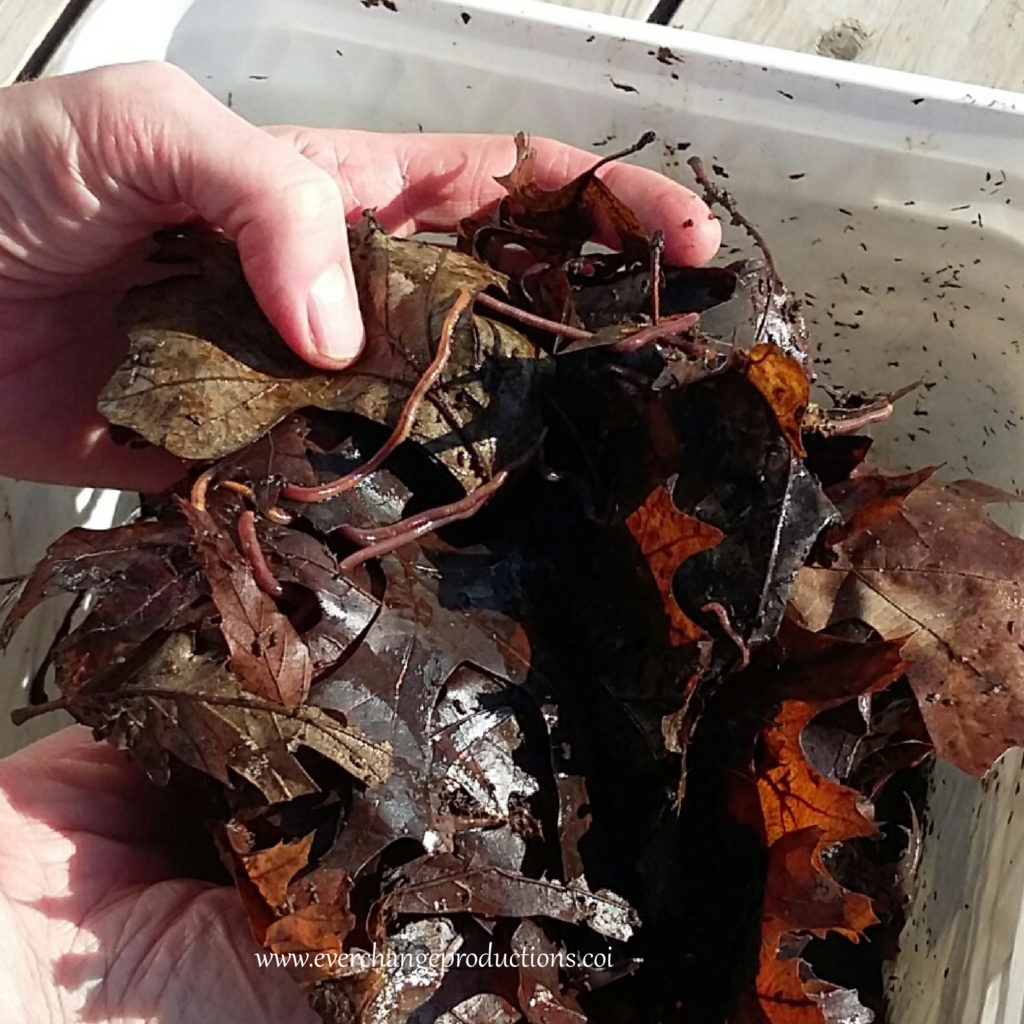
Step 3: Add worms to your worm bin!
Once your buckets are together and the bed is nice and comfy with food, then it’s time to add the worms!
Simply place the worms on top of bedding and let their natural photophobic tendencies do the rest. Allow the worms to settle into bedding overnight. Start feeding the next day.
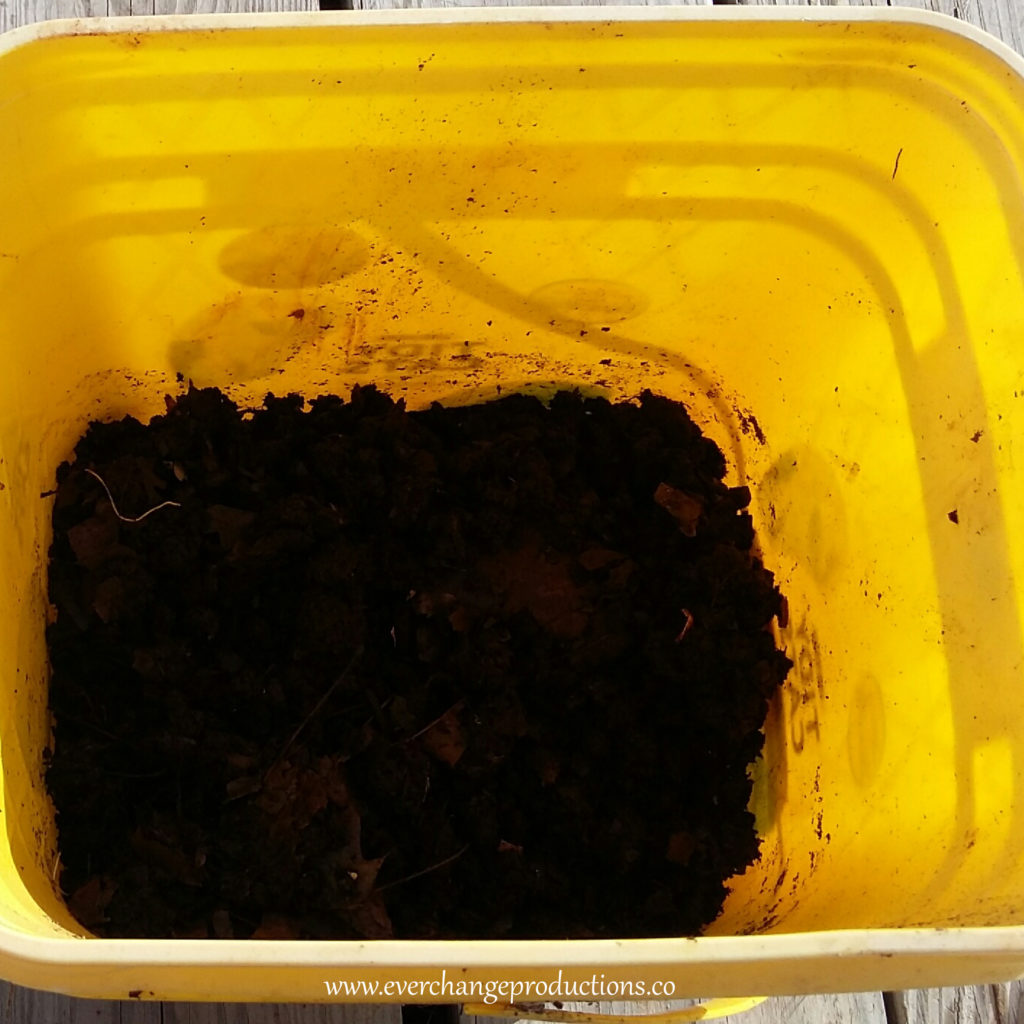
How long does it take to make vermicompost fertilizer?
Step 4: How to Harvest Your Vermicompost
After a couple of weeks, you’ll see little trails of what looks like dirt. This is what you’re looking for when it comes to harvesting. Keep adding bedding and food until your bucket is about half full of this vermicompost. That’s when you’re ready to fill the next bucket with bedding. The worms will slowly migrate up to the new food. Give the worms a couple of months to catch up and then you can take the whole bucket of vermicompost to put in the garden. A few worms might be left, but they’re super good for your garden.
Check out this tutorial in video form!
What Food to Put in Your Worm Bin?
There are some limitations for feeding worms, but they still need bedding such as cardboard, leaves or paper. They will also eat this, but they need food such as greens, eggs, coffee grounds, etc. Learn more about what to feed worms here.
Interested in composting, but don’t know where to start? Subscribe for access to a free quiz and find the best composting option for you.
Here is a complete list of bedding and food options. Pin for later:
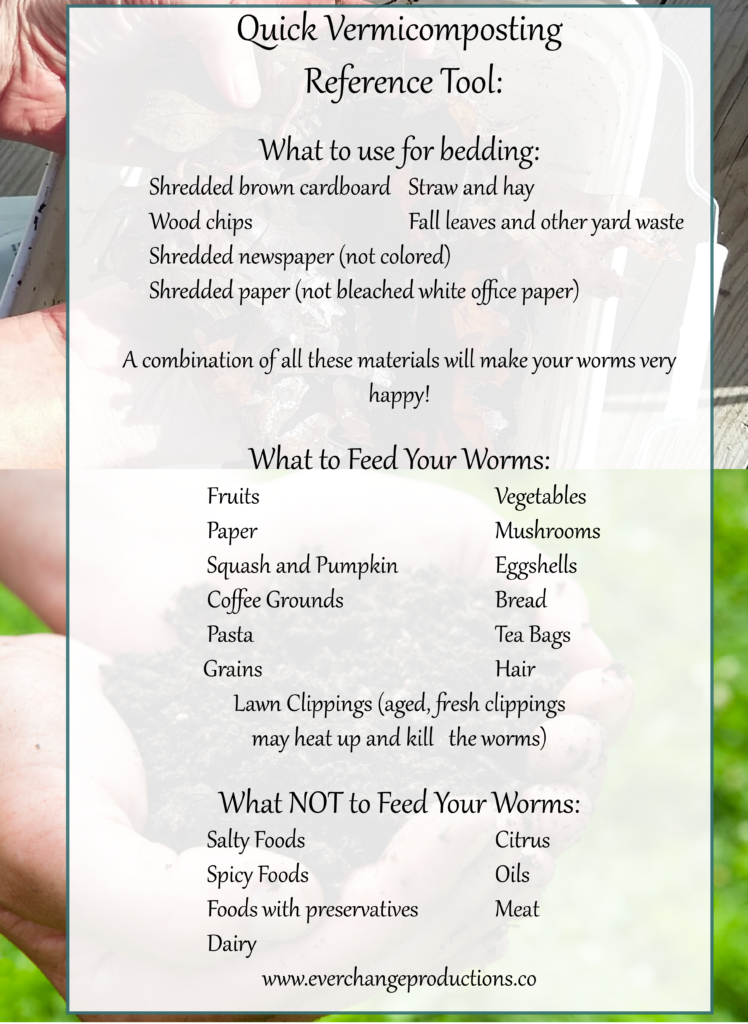
Worm Bin Troubleshooting
Sometimes, the cycle in the worm bin might be disrupted and cause problems. Learn more about the common problems your worm bin might come across and how to solve them.
If you’re interested in learning how to set up a worm bin start to finish, check out this 2-part vermicomposting video series!
For more sustainable DIYs, check out these great ideas!
DIY Upcycled Corkboard
Slow Fashion – Sashiko
How to make your own bug spray and bug bite sticks
DIY- Vegan Body Butter Bars
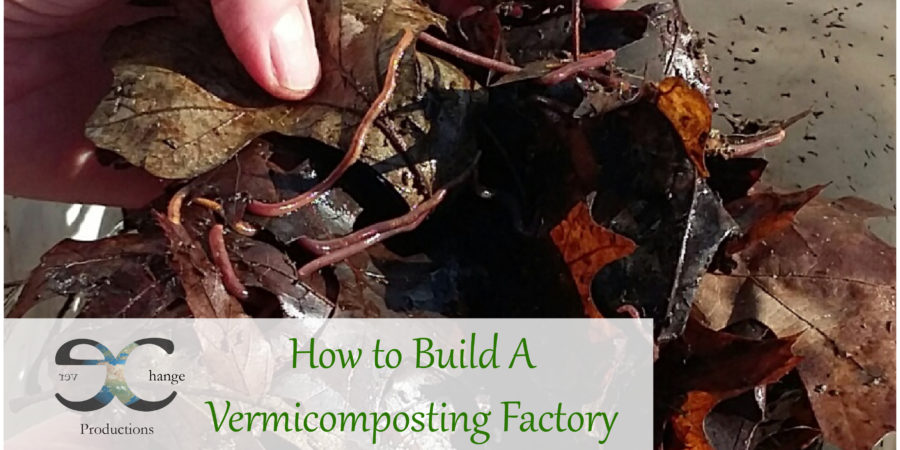
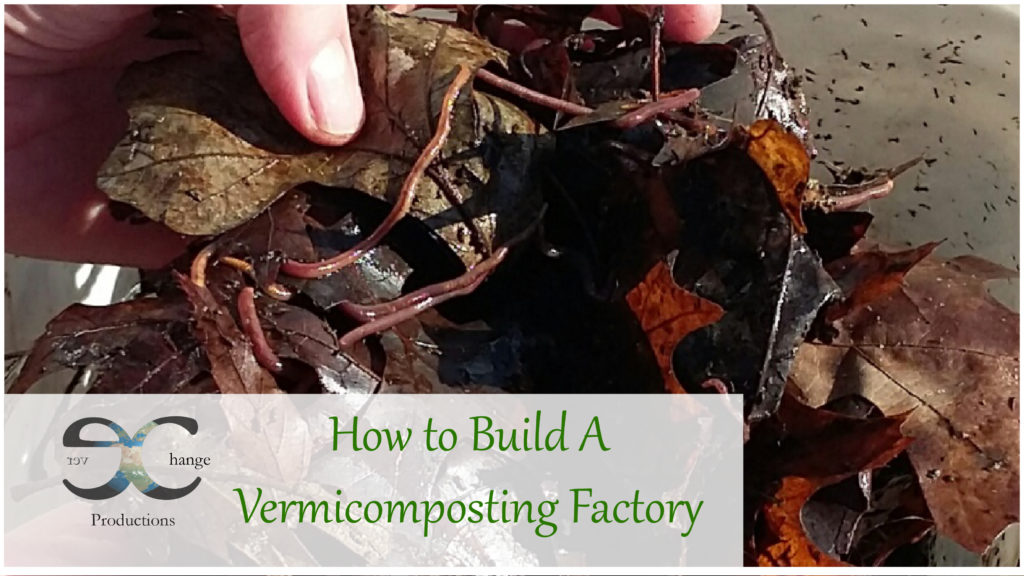
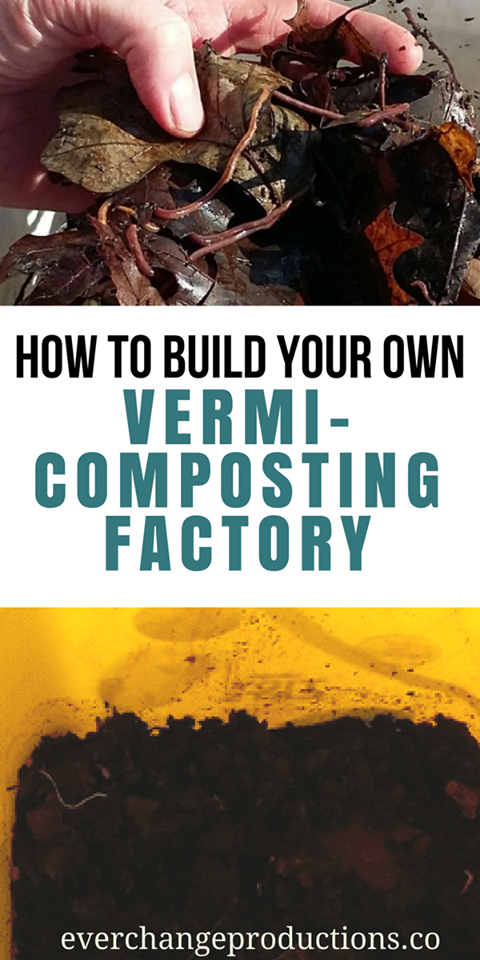
I wonder how this would work out in a hot country – would this smell? We get lots of ants (they can smell anything and everything) so I’m worried about that.
[…] How To Build Your Own Vermicompost Factory […]
What are the benefits to using worms in the compost? I compost but without the worms.
The Pink Paperdoll
I think that it’s a great way to compost more in a smaller space. The thing about compost is that it has to get hot in order to do what it needs to do. In a small space it’s really hard to do, but with the worms, it really speeds up that process. They eat up to half their body weight, which if you have 500 worms which would easily go into a bin system like this, then that’s quite a bit of food that’s being eaten up.
Thanks for posting this! I found you via the #sustainablesunday linkup. I didn’t think about using cat litter bins…I’ve got several floating around here. So now all I need are worms!
Awesome! Please, let me know how it goes for you. I couldn’t be happier with my set-up!
Your post is very timely I just finished reading and reviewing a book on worms called The Worm Book. It reiterates the things you say here, but also talks about other compost designs, the biology of worms and even how to raise them to sell. You can see my review here. http://skipthebag.blogspot.com/2016/06/review-worm-book.html
This is a fantastic post! I have worms, but they are currently just in a big rubbermaid container with holes in the lid. I would love to build something like this. I’m going to share it with my husband who has been looking for a better system.
Great idea! I love upcycling those bins (I thought i commented on this already but I guess not!) Thanks for linking up #sustainablesundays
Love the idea. Especially adding buckets. How will the worms migrate up to the next bucket? How many and how big are the holes for them to fit through?
Thank you
Hello Christa,
The worms just go where there is food, so as you add food to the top bucket instead of the former container. The worms just migrate through the holes, which are probably about an 1/4 inch hole. You could also use a 1/8 inch, but anything bigger and it’ll be too easy for other things to fall through. Hopefully that answers your question, but feel free to ask again, if I need to clarify again.
[…] – Build Your Own Vermicompost Factory| Ever Change […]
[…] people, but it doesn’t take a huge fancy set up, nor does it stick. In fact I’ve been composting my apartment for the past year. Check out this general composting overview for more […]
Awesome, I think I will give this a crack in a few months time. I want to get more experience under my belt. I have only just started my veggie garden and I have been composting a couple of months with moderate success. So I will give this a go, pinning for later!! Thanks for sharing with #goinggreenlinky
Definitely don’t want to take on too much at a time. Would love to know how your garden goes! Good luck!
This just goes to prove that anyone can compost no matter where they live. I must admit I killed my first set of worms in the back yard composter as I didn’t notice it was filling up with water in the winter (sorry worms) but I went on to make more successful ones!
Thank you so much for linking up to #GoingGreen and I hope you’ll pop over for the next one which opens on July 3rd 💚
It’s so true! I’ve been neglecting my worms lately, but amazingly they’re still going strong. Very resilient!
[…] The cherry stems we decided to compost in our vermicomposting system. […]
[…] need that much dirt, so I use mushroom compost, which works great and has tons of nutrients. I’ve recently started vermicomposting, which helps me add nutrients when […]
[…] Build Your Own Worm Bin from Ever Change Productions […]
[…] for kids. Most kids love holding worms and looking at them. They also love to feed them, so building a worm composter is a great idea for the classroom too. Be sensitive if you have a child that doesn’t enjoy the […]